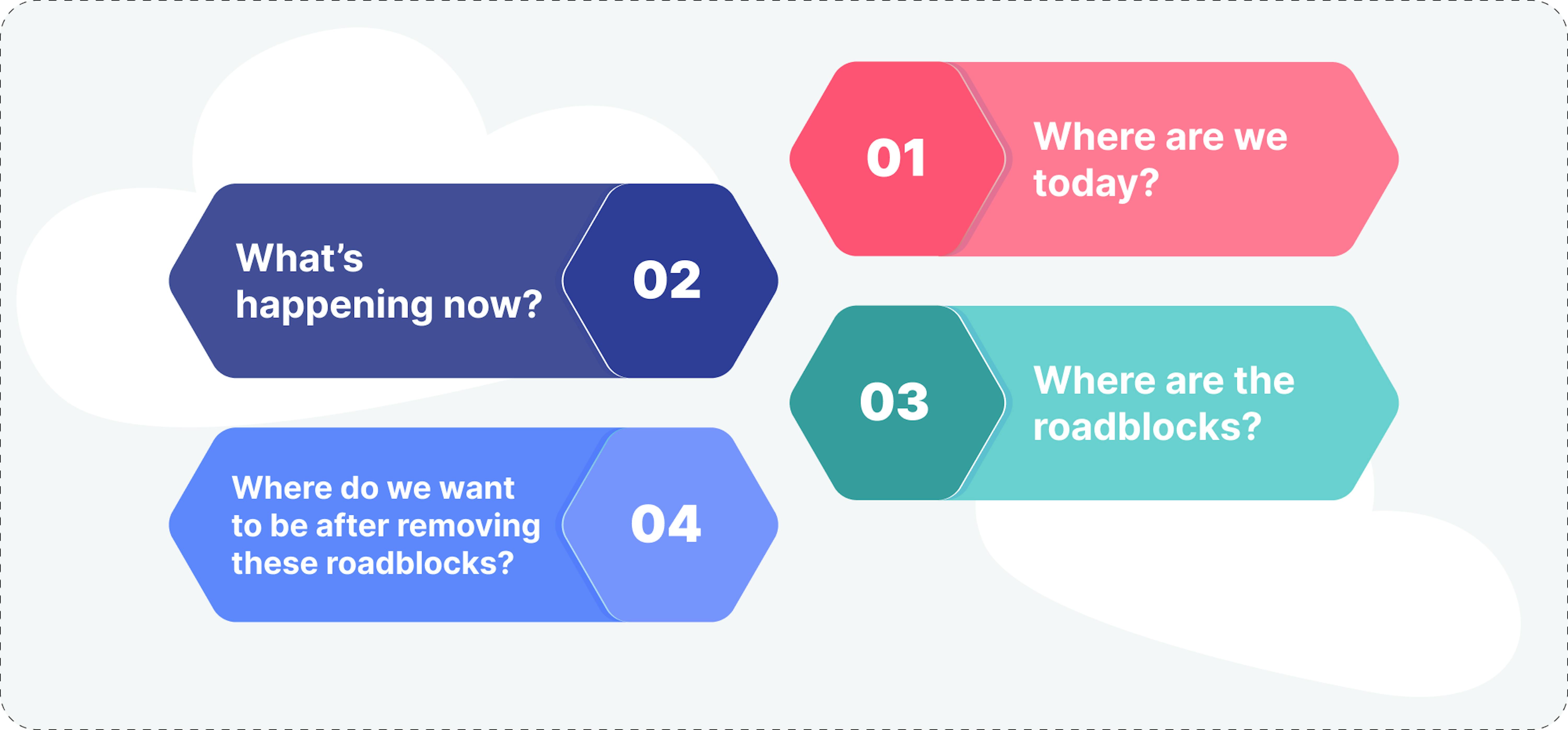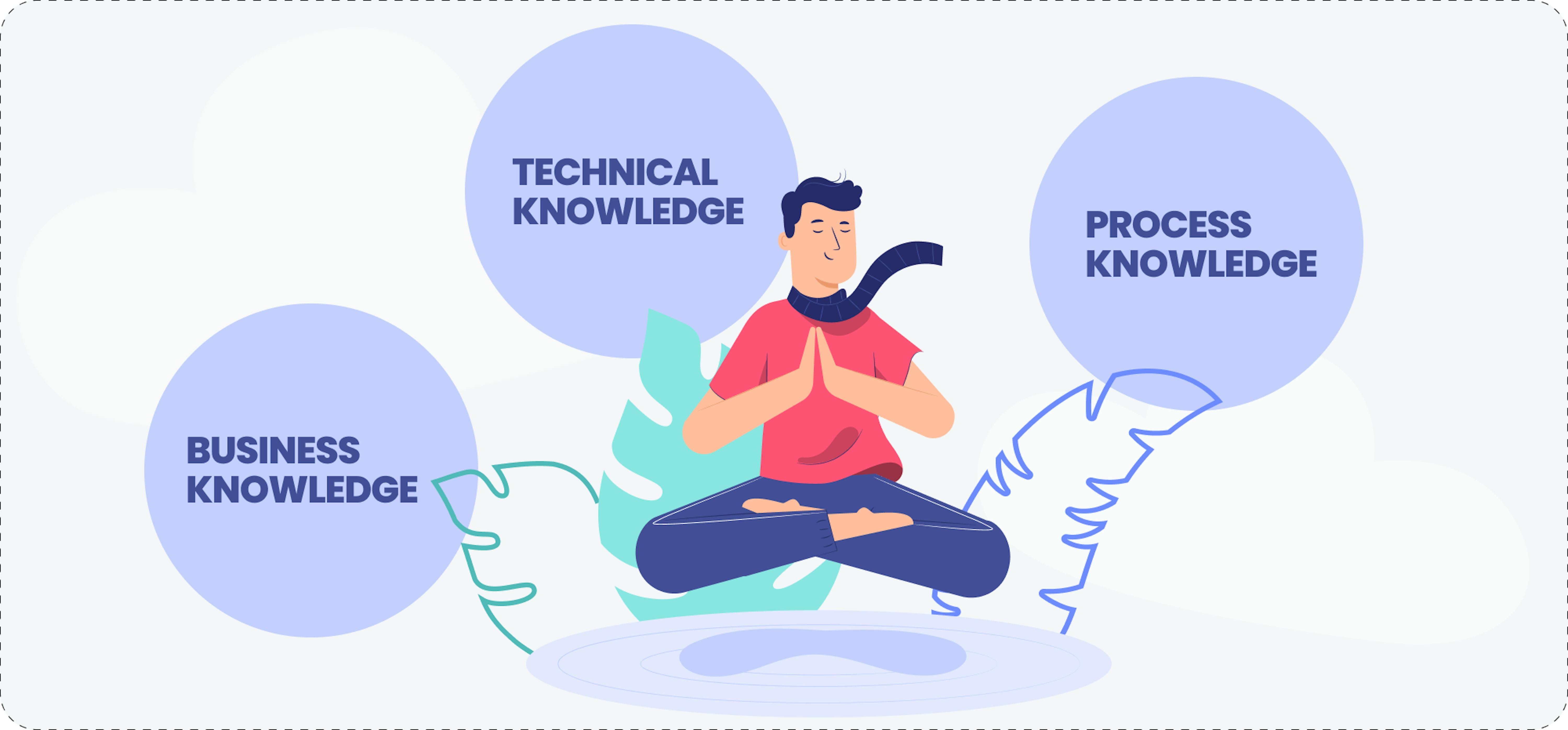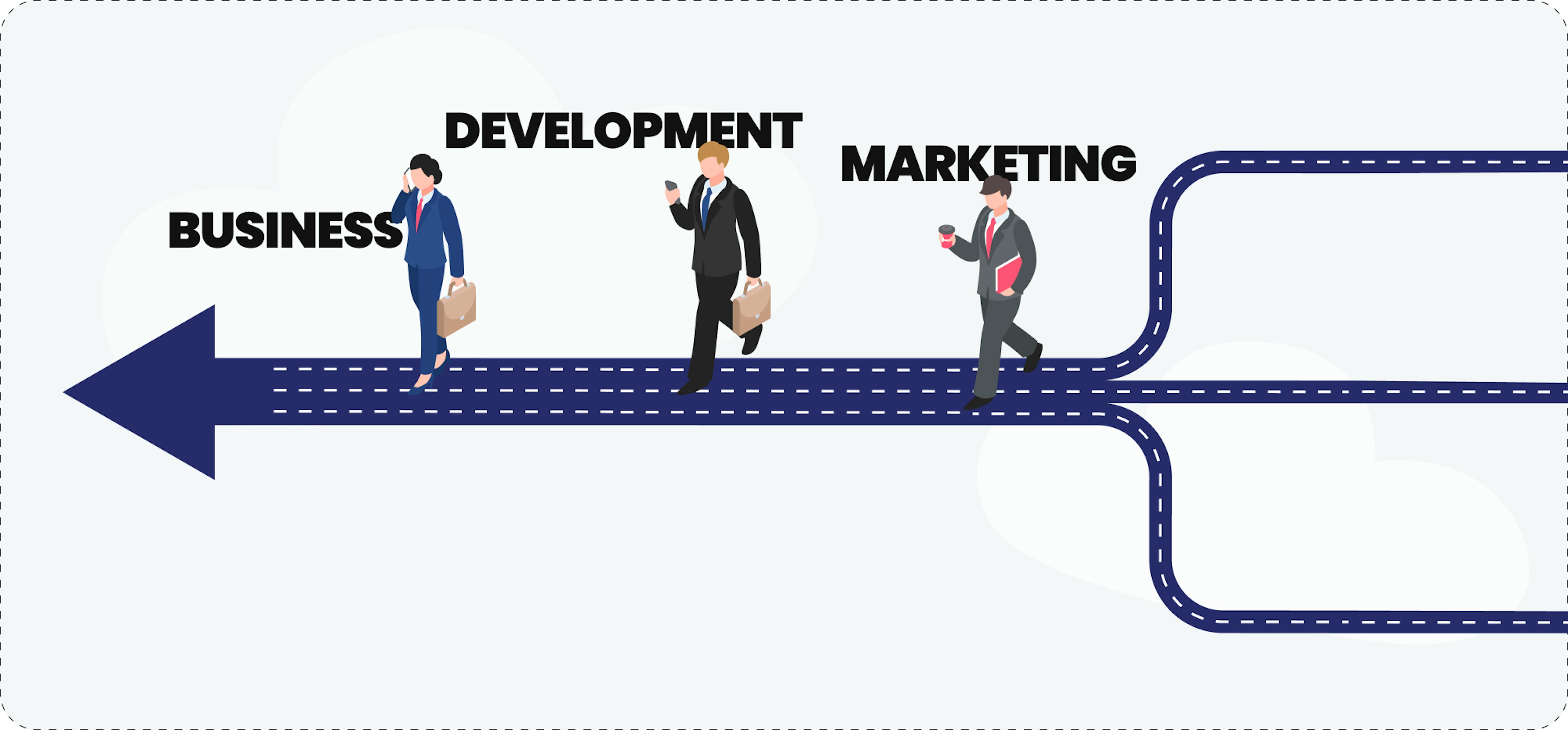What are value streams and value stream management?
A value stream encompasses the software development lifecycle and describes a project's workflow, concentrating on the value the process brings to the customer. It begins with the conception of a product or service and ends with the presentation to the client.
Depending on its size, a company may have many value streams. For example, those involved in the business side of a project will view their streams differently from those involved in development. A project manager (PM) is at the heart of their value stream, ensuring their team works in an agile way to deliver value to the customer quickly and efficiently. You may have heard of the "lean" office and manufacturing. These practices aimed to reduce inefficiencies within factories and other industries and value stream management in software development draws from these approaches.
Value stream management (VSM) integrates various value streams within a project to develop more efficient practices and communication that lead to high-quality customer experiences. Value stream product management brings the silos within a business, such as the C-suite, product teams, and developers, together to find a common language that leads to a shared understanding of value.
This is complicated by these teams' individual approaches with a particular understanding of their role within the value stream. VSM "pulls" people and teams out of their silos to focus on the bigger picture and improve cooperation between and reduce friction among teams and employees.
The benefits of value stream management
VSM allows you to identify inefficiencies within your current value streams, commonly found in the handoff and delivery stages. Resolving these issues leads to the following:
- Encouraging a better understanding of a team's/employee's role in delivering value to the customer. The importance of value encompasses more than just the customer. When entire teams and the individuals in them are clearly aware of how their work delivers value to a customer and their significance in the value stream, you can expect more enthusiastic work and smoother communication on work processes.
- Aligning goals and understanding among the teams/projects across a company. Each of them has their own goals for a project or product. The business team wants to increase profits, and the developers want to release a perfect product. While sharing a product, if left unmanaged, these separate value streams could create miscommunication and conflict around priorities for the product. Likewise, if managed properly, you can shift the focus onto the overall value that the customer will receive.

Eliminating inefficiencies with VSM also helps companies:
Increase predictability:Transparency and big-picture thinking allow teams to understand the entire process, reducing uncertainty and the chances of surprises disrupting deadlines.
Raise customer satisfaction: Efficiency in work processes and communication leads to quick responses to customer queries and requests, improving their overall experience and the company's reputation.
Boost productivity: Teams will start thinking, testing, and delivering faster.
Reduce costs: Unnecessary hours, software, or other tools often plague teams with poor VSM.
Create better software: Automate tedious tasks to give your developers more time to innovate and avoid errors and bugs.
Increase end-to-end visibility: Stakeholders across an organization can track projects in real time and adapt to changing situations as needed.
Elevate morale: Emphasizing the value customers receive and showing how it matters to them leads to more satisfying work for developers and other team members.
📖 Are you facing challenges with team productivity? Explore the SCORE model and its powerful techniques for enhancing performance in this must-read article.
Who benefits from value stream management?
VSM benefits start-ups with a single value stream and large enterprises with many. Where there is a customer and a product or a service, there is the opportunity to optimize the steps that deliver the customer experience and feedback between the company and the client. VSM requires communication among teams and stakeholders, which can be easier within smaller businesses, but if done properly, large enterprises will gain from the process.
VSM makes value streams visible to each other and builds connections for healthy communication and conflict while identifying inefficient dependencies, regardless of size.
Evaluating workflow and value streams
Visualizing value streams effectively assesses the current state of cooperation among teams and stakeholder perceptions of the project's goals. This strategy is called "Value Stream Mapping," and you can draw out your maps using software or a trusty whiteboard. Inviting stakeholders from across your organization to collaborate is an essential step in the process. The more individuals present, the more accurate your visualization will be. Once you have your map, calculate the touch time and idle time throughout the flow. This will give you the cycle time for a particular value stream. Then, begin labeling items as adding or not adding value from the customer's perspective.
Here are some questions the Lean Enterprise Institute suggests using in this process:

Then, use the answers to develop an action plan. By labeling these areas, you've created a list of points for project management to focus on to illuminate roadblocks in the workflow. These may be understaffed teams, a lack of automation, or breakdowns in communication.
You have the option to apply certain metrics to measure the individual items within a value stream map. These include:
- Flow metrics: Velocity, time, load, efficiency, and distribution
- DORA (DevOps Research and Assessment) metrics: To evaluate lead time, change failure rate, deployment frequency, and mean time to recovery
There are value stream management tools that can assist in gathering these metrics.
This stage can be challenging because it involves finding a common language with other teams and stakeholders with their own value streams and, perhaps, competing visions of what is valuable. If not managed properly, you will be left without a clear mapping of your value streams and, therefore, no understanding of where to find inefficiencies. Like any change process, it is crucial to clearly explain the benefits to all stakeholders to encourage maximum engagement.
The role of a value stream manager
To facilitate effective value stream management, companies have the option of hiring or appointing an individual to oversee the process, value stream manager. This person should clearly understand lean principles and have a big-picture mindset involving business, technical, and process knowledge. Holding this skillset, they will act as a guide and "interpreter" for the various stakeholders as they map value streams and identify inefficiencies.

This manager will also need to be aware of the pain points involved with any change process, particularly VSM. If they can address these challenges, the company will benefit from VSM.
A changing landscape
One challenge with VSM is the paradigm shift from traditional hierarchies and roles to a focus on value. This change may cause certain individuals to feel threatened. They may perceive it as a reduction in their roles in a product, while other roles that they considered "less important" gain prominence. This will inevitably lead to funding and salary issues in the short or long term.
New skills
Another obstacle in implementing effective VSM is its close relationship with automating. In fact, they operate in tandem. By removing tedious processes from developers' workflow, these team members can focus their energy on creating value. However, automation means optimizing and updating software and processes. If a team or organization's current stack doesn't match the requirements for VSM, PMs will need to acquire financing, which means justifying extra costs to stakeholders (see section above about proper involvement and communication). Likewise, team members may require onboarding with the new processes and technologies, which in turn takes time away from development. Once the team is aware of the processes, the PM will need to monitor implementation in addition to their other tasks to ensure compliance and provide reports to stakeholders.
Value stream managers need to be well-rounded individuals with practice experience on projects and knowledge of processes across a business to foresee these roadblocks and develop mitigation measures. The most important of these will be clear and transparent communication with stakeholders to guarantee their understanding and acceptance of the changes VSM will bring.
Summary
Value stream management is on the way to becoming the future of software development. It bridges gaps in previous frameworks by creating a common language that all the stakeholders involved in a product can use to streamline their processes. VSM focuses on value and the steps within a process that bring the most value. Identifying these areas provides data to analyze to improve efficiency and increase both customer and employee satisfaction. However, the changes brought by VSM create challenges that some stakeholders will resist. Value stream managers will address these roadblocks before and during the process.











